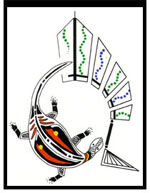NAIDOC Week Oration to Senior NSW Police
Archived
You are in an archived section of the website. This information may not be current.
This page was first created in December, 2012
NAIDOC Week Oration to Senior NSW Police
Sydney Police Centre
Surry Hills
Tom Calma
Aboriginal and Torres Strait Islander Social Justice Commissioner
Tom Calma
Aboriginal and Torres Strait Islander
Social Justice Commissioner
NAIDOC Week Oration NSW Police
Good morning everyone and thank you Deputy Commissioner Lee Shearer for introducing me.
Firstly, I’d like to begin by paying my respects to the Gadigal peoples of the Eora nation, the traditional owners of the land where we gather today. I pay my respects to your elders, to the ancestors and to those who have come before us.
Thank you for the opportunity to speak with you all as part of your NAIDOC week celebrations. It is wonderful to see a room full of senior police, as high up as a deputy commissioner, coming together to think about how police can work better with the Aboriginal community.
One of the most rewarding parts of my job as Aboriginal and Torres Strait Islander Social Justice Commissioner and Race Discrimination Commissioner is being able to meet with people from all walks of life and to talk about how we can achieve more for Indigenous Australians. I always come from the perspective of trying to find strengths - in communities, in organisations, in individuals - as the building blocks for these achievements.
And I am aware of some fine achievements of the NSW Police force aimed at improving relations and outcomes with Indigenous people. Let me congratulate you on your Aboriginal Strategic Direction and Aboriginal Employment Strategy.
But, as I am sure you would all agree, there are still some very big challenges that the NSW Police Force must face to fully implement these strategies.
I know I don’t need to lecture anyone in this room about Indigenous over representation statistics but I think it is worthwhile to quickly reflect on them in this context.
Indigenous imprisonment
- Indigenous adults = 13 x more likely to be imprisoned than non Indigenous adults
- Indigenous juveniles = 23 x more likely to be detained than non Indigenous juveniles
- Indigenous women = 23 x more likely to be imprisoned than non Indigenous women
Indigenous imprisonment rates are unacceptably high. Nationally, Indigenous adults are 13 times more likely to be imprisoned than non-Indigenous adults. Indigenous young people are 23 times more likely to be placed in juvenile detention than their non-Indigenous peers.
Indigenous imprisonment
- 48% increase in Indigenous imprisonment since 1996
- 34% increase in the Indigenous female imprisonment population between 2002-2006
Even more worrying, we have seen a 48% increase in Indigenous imprisonment since 1996, and the gap between Indigenous and non-Indigenous imprisonment rates continue to grow.
This is particularly pronounced for Indigenous women. Indigenous women are 23 times more likely to be imprisoned than non-Indigenous women. We have also seen an explosion in the number of Indigenous women in custody. Between 2002 and 2006, the Indigenous female prison population jumped 34%.
I know we have all heard these statistics before but let’s take a moment to think about the human impact of these numbers. Firstly, each of these numbers represents an individual. However, we know that the negative impact of imprisonment and involvement with the criminal justice system does not stop with the individual.
Of course, there is the impact on the victim but there is also the impact on the broader Indigenous community. Offenders are parents, aunties and uncles and have important social and cultural roles in their communities. Removing these people from their communities can weaken struggling Indigenous communities further. This is even more destructive if they are returning from a stint of imprisonment without the necessary rehabilitation and community reintegration as is so often the case.
Offender characteristics
- Many offenders are also victims of violence or abuse
- 70% of Indigenous female prisoners had been sexually abused as children
- 78% Indigenous female prisoners physically abused as adults
Research has also shown us that the line between victim and offender is often blurred. In research by Caroline Atkinson-Ryan, cited in the Little Children are Sacred Report, over a third of the Indigenous male prisoners she interviewed had been sexually abused. Of these men most could be diagnosed with post traumatic stress symptoms.
The situation appears to be even worse for Indigenous women with a NSW study finding that 70% of Indigenous women had been sexually abused as children; 78% reported being physically abused as adults; and 44% reported being sexually assaulted as adults.
The more we are learning about the backgrounds of Indigenous people involved with the criminal justice system, the more we are seeing that this is a group of severely disadvantaged people.
Offender characteristics
- High levels of substance abuse, mental health problems and cognitive disabilities
- Drug Use Monitoring Australia- 90% of juvenile detainees vs 40% of non Indigenous juvenile detainees tested positive for drugs in police custody
A paper just released by the Australian National Council on Drugs, National Indigenous Drug and Alcohol Committee, has highlighted the connections between Indigenous offending and substance misuse. And I’m sure it’s not news to you that in NSW almost 90% of Indigenous juvenile detainees, compared to 40% of non-Indigenous detainees, tested positive for drugs in police custody.
There are also links between offending, mental health and cognitive disabilities. Last year I released a report looking at these issues for Indigenous young people, with the aim of diverting them from the juvenile justice system.
Again in NSW, Indigenous young people in juvenile justice are at least 4 to 5 times more likely than the general population to have an intellectual disability than the rest of the population. Even less known about is the rate of mental health problems amongst Indigenous young people in juvenile justice; but we have reason to believe that it could be as high as 80%.
These statistics feed into the negative stereotypes of Indigenous people. These statistics and other messages of ‘under achievement’ also impact on how Indigenous people see the world and their life chances.
How do you think it makes a young Indigenous kid feel to know that they 23 times more likely to be sent to juvenile detention than the white kid sitting next to them in school? And when they get to juvenile detention they are likely to be greeted by friends and family in a system where often half of the population is Indigenous? How do you think they feel when they get out to find that their mother, father, uncle or aunty has been put in lock up too. Worse still, how do you think they feel if a family member has been a victim of violence or abuse but has felt disempowered to come forward and report the crime?
I’ll tell you how they feel - they feel angry. They feel like they don’t matter as much as other people.
They also see that the Police are playing a role in all of these decisions. When they see more Indigenous kids in juvenile detention than white kids and when they live in neighbourhoods where Police are highly visible, they tend to connect two and two together.
Of course, I am the first to admit that there are two sides to this story but the reality is that the Indigenous community perception of the NSW Police still needs improvement. And I say perception advisedly as I also have an appreciation of the good and dedicated work many in the service provide.
Indigenous community perceptions of Police
- Rooted in a long history of colonisation
However, many of these community perceptions are rooted in a long history. Police were historically agents of colonisation. It might seem like ancient history but remember that the Stolen Generations were still being taken away in our lifetimes.
I really think that the Police have moved on in many ways but there is undeniably work to be done mending and building relationships. I think it is probably difficult for you to get coverage of all the good, every day interactions and relationships that take place, but it is very easy to get coverage when things go wrong.
I get the impression that the NSW Police management are genuinely committed to this task. And there is a lot of goodwill in Indigenous communities as well, it is just a case of approaching issues with sensitivity, respect and partnership.
In this spirit, I have been asked to also talk about ‘Indigenising Police Policy’. Let me say firstly, this isn’t as radical or as difficult as it sounds. It isn’t about generating lots of documents and reports or complicated new work.
In my opinion, what you are aspiring to in your Aboriginal Strategic Direction is really just good policing work with strong community engagement. I’m not saying it is without its challenges but it certainly shouldn’t be seen as insurmountable given the right leadership, support and training.
Indigenous policy is everyone’s business
- Competency in Indigenous policing will strengthen the entire Police Force

If you can get the Indigenous policing issues right, you will see the flow on effects across the Police Force. You will have a Police Force that has the right skills to deal with complex situations, are competent in working with diverse communities and of course, have the protection of individuals at the heart of their work.
You will have a Police Force built on respect, engagement and partnership.
Getting these issues right will strengthen the NSW Police force across the board. That’s why Indigenous policy is everybody’s business.
Unfortunately, sometimes Indigenous policies are seen as the domain of specialist policy units and Indigenous staff rather than the responsibility of everyone across the organisation. This limits their effectiveness and silos knowledge and experience.
I note that you have widespread reporting and accountability structures built into your Aboriginal Strategic Plan which may address some of this. However, the key is a strong commitment from constables through to commissioners.
Experience shows us that the effects of Indigenous policies ripple beyond Indigenous communities. The classic example is the Royal Commission into Aboriginal Deaths in Custody, eighteen years ago.
The recommendations of the Royal Commission have led to better standards of safety for all prisoners, not just Indigenous prisoners. Deaths in custody are now routinely investigated and there is greater accountability. Similarly, the recent WA Coroner’s report into the death of Mr Ward should also provide life saving lessons for the entire population.
I think we can also credit the recommendations of the Royal Commission for the advent of widespread community policing initiatives in Australia.
Recommendation 214 states:
The emphasis on the concept of community policing by Police Services in Australia is supported and the greater emphasis should be placed on the involvement of Aboriginal communities, organisations and groups in devising appropriate procedures for the sensitive policing of public and private locations where it is known that substantial numbers of Aboriginal people gather or live.
Community policing is now an important part of working with a range of different groups. For instance, in my other role as the Race Discrimination Commissioner, I fund a range of activities under the Community Policing Partnership Project that support the development of local partnerships between Police and Australian Muslim Communities.
Community Policing Partnership Project
- Supports the development of local partnerships between Police and Muslim communities

We have had some great success developing these partnerships with the NSW Police. This year I am funding 9 projects in NSW, mainly across Western and South Western Sydney, that facilitate better relationships and understanding between Police and Muslim communities.
This is exciting work and done in innovative ways. For instance, ‘Breaking the myths Habibi’ between Campsie Police Local Area Command, Canterbury Bankstown Migrant Resource Centre and the Riverwood Community Centre brings Muslim communities together with police to break down stereotypes, through activities like outdoor trust building activities and a quiz show. A DVD will be produced to be used as a resource to other Police Local Area Command’s.
Other projects include a Police/ African Islamic Communities Learning Circle with Blacktown Police Local Area Command and a Police/ Afghan Hazara communities Learning Circle with Flemington Police Local Area Command. Regular learning circle meetings provide an opportunity for dialogue as well as education about issues like crime prevention, domestic violence, motor vehicle safety and other community issues. These are good and successful projects that, unfortunately, the media do not seem to have an interest in.
Last year we also conducted a collaborative project between the Commission and NSW Police to develop resources so that law enforcement agencies can better deal with acts of racial and religious hatred and abuse. TRUST stands for Treat, Record, Understand, Supply and Train and are guidelines to help improve the monitoring and response to racial and religious hatred by police.
Pinned up in every police station in NSW, the poster encourages police to report incidents on their systems and refer victims to the Commission or the NSW Anti Discrimination Board.
My point is that, without the foundation and experience of community policing gained from working with Indigenous communities, these initiatives would probably not be happening. The developments in working with Indigenous communities have led to a shift in the way policing work is seen, so that work building relationships and trust is now part and parcel of all Police Local Area Commands.
I’d hope that these relationships actually make your job easier and more effective. We all know that police rely heavily on community intelligence to help solve crimes and of course, prevent them in the first place. Police need to be connected into the community for this to happen.
Crime Prevention
- Police crime prevention work with Indigenous young people breaks down barriers and increases pro-social activities

I’m also really happy to see Police actively working in crime prevention programs. I remember back when I was a young kid growing up in Darwin, just how much of an impact the PCYC made on me and my friends. It helped break down some of those barriers and perceptions and gave us something fun but worthwhile to do.
I understand that NSW PCYCs are now contracted out but the Police still play and active role. This is invaluable work - anything that can break down those mutual stereotypes and model positive social behaviour has the potential to prevent crime.
I also commend the $1.2 million crime prevention fund for Indigenous communities that provide targeted activities, especially for young people. I am a big believer in early intervention - the earlier we get in and give these young kids another way of thinking about the world and challenge some of their stereotypes about police, the better.
Camps, basketball and footy comps are not always enough to turn these kids around. Police have a role to play in whole of government approaches that include health, education, community services, housing and juvenile justice to ensure that the underlying needs are met. Again, I think this is a shift from traditional policing work where the offender was caught and convicted, to one that is more complex and sees policing embedded in the continuum of community services.
But I imagine sometimes you must feel very frustrated by gaps in the system. Young people often become involved in crime as a result of disengagement from education and child protection issues, just as adults often become involved in crime due compounding effects of alcohol and substance abuse, mental health issues and homelessness.
These systemic issues are often outside of the scope of the police but I think your strong advocacy in high level whole of government forums has a great deal of weight.
Police enforce the law, they don’t make the law. Nonetheless, the police are the gatekeepers to the criminal justice system and do have considerable discretion.
Discretion and public order offences
- Indigenous people 17 x more likely to be in police custody than non Indigenous people
- Nearly a quarter of Indigenous people in police custody were being held for public order offences
Use of discretion is an ongoing issue in Police and Indigenous relations. Nationally, according to 2002 statistics, Indigenous people are 17 times more likely to be held in police custody than non Indigenous people. There are complex reasons for this including remote locations. However, it is concerning that the 2002 police custody survey found that nearly a quarter of all Indigenous people in police custody were there for public order offences.
Public order offences and Police actions to intervene in public places continue to undermine Police and Indigenous relations today. It seems so counter - productive when at the same time Police are trying to build up trust and challenge negative stereotypes.
Again, young people seem to be the targets because they use public space more than adults. A NSW Ombudsman’s review of the move on powers found that 22% of all move on orders were given to Indigenous young people. In places like Bourke and Brewarrinna the rate of move on orders was 30 times higher than the state average.
These statistics are from 1999 and 2000 and I would hope that there has been some improvement since then. However, anecdotally we are still hearing that Indigenous young people perceive unfair treatment from Police. Whether this is real or only perceived (and remember we are dealing with a long history of distrust) it still needs to be addressed.
Another emerging area of concern are the recent amendments to the Law Enforcement (Powers and Responsibilities) Act, that lowers the threshold from "seriously" drunk to "noticeably" drunk. This increases police move-on powers for intoxication as well as the risk that failure to comply will result in arrest for a criminal offence.
Given that the Royal Commission recommended the decriminalisation of public drunkenness, there is a fear that these amendments are a back door means of imprisoning drunk Indigenous people. And given that Indigenous people are 42 times more likely to be detained in police custody for public drunkenness, these fears are not unfounded.
These aren’t easy issues and I know that you need to balance the safety of your officers and the community with the rights of the individual. And I’m sure, given how much work and commitment you have put into your Aboriginal Strategic Direction, it must be frustrating to see the hard earned gains being potentially compromised.
Indigenous community partnerships
- Night patrols:
- Community owned
- Can defuse conflict
- Greater efficacy when linked in with sobering up shelters, mental health resources, safe houses etc
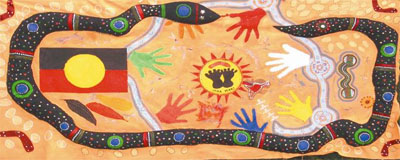
The answer, however, is contained in your Aboriginal Strategic Direction. Police need to be working collaboratively with Indigenous communities to manage these sorts of issues. Night patrols have been shown to be very effective in dealing with issues like public drunkenness and young people at risk.
The great advantage of night patrols is that they are made up of people from the community who have the respect of the community. They can go in and defuse a situation where the police involvement can often escalate it.
Communities feel empowered because they are dealing with their own problems and Police are able to build relationships on respect that aren’t compromised every Friday night when troubles emerge.
Night patrols aren’t able to solve every problem and are not a substitute for a sworn Police Force, however, they should be a point of first call for many situations. Their efficacy is even greater when they are linked in with resources like sobering up shelters and mental health support.
I’m very heartened to hear about plans to train local Indigenous leaders to give cautions under the Young Offenders Act. Again, this can empower the communities and improve outcomes for the young person, particularly if as a result of the caution they receive assistance from the community to deal with their offending related issues.
So far, I’ve only spoken about half of the policing picture: offenders. We also know that Indigenous people are more likely to be victims of crime, especially family violence offences.
While it is difficult to estimate the incidence of violence in Indigenous communities, in 2005 it was reported that 18.3% of Indigenous women experienced physical or threatened abuse in the past 12 months, compared with 7% of non-Indigenous women. We also know that there is a low reporting rate amongst Indigenous communities.
Most police crime prevention work with Indigenous communities seems to revolve around youth at risk. I would like to see more focus on family violence prevention work as well.
There are some great opportunities for Police to work on family violence issues. Last year I ran a course with the funding of the Commonwealth Attorney General for Aboriginal Family Violence Legal Prevention workers. The course was designed to help skill them up on issues like defining family violence and abuse, human rights, Australian law, Aboriginal and Torres Strait Islander courts and justice systems and customary law. This training has been very well received and could be very useful for ACLOs and other Indigenous Police staff.
In my 2007 Social Justice Report I looked at best practice in family violence and child abuse and reported on the Mildura Family Violence and Sexual Assault awareness campaign.
Mildura Family Violence and Sexual Assault Awareness campaign

Victoria Police, in consultation with the local Indigenous community in Mildura developed a series of TV commercials and posters to communicate anti-violence messages. What made this campaign unique was the very strong partnership with the community which has led to improved community/ police relations.
The ads were run in the Mildura area for 12 months. They focused on three different target groups:
- Women - featuring local Indigenous women encouraging others to report violence
- Women and children - focusing on the impact of violence on children, and
- Men - featuring Adam Goodes with the message that violence is not acceptable.
The process for making the ads was just as important as the end product. Victoria Police built a lot of trust with the community during the process and overcame initial suspicion that the community members were just there to rubber stamp the ads.
Victoria Police understood to enter into a partnership with the community they had to get the power relations right. I think this often gets lost in all the talk about partnership. Sometimes one party has to step back and give up some of the power for there to be an equal partnership.
In this case, Victoria Police had minimal input into the content of the ads and agreed that the point of contact on the ad should be for the local Aboriginal Family Violence Service rather than the Police. This was an attempt to make the message culturally accessible and balance some of the reluctance that some community members have about reporting to police.
Another positive was that the project also acted as informal recruitment, with one of the women in the ad now employed as an ACLO in the area. The employment of a respected, female ACLO was a key achievement in trying to increase family violence and sexual assault reporting rates.
Recruitment and retention of Indigenous Police Officers and ACLOs seems to be an issue across all jurisdictions, and indeed across the entire public service. NSW Police should be commended for the steps that you are also taking to increase Indigenous employment.
NSW Police Aboriginal Employment Strategy
- Flexible pathways in
- Aboriginal Employees support and mentoring

Again, I welcome the NSW Police Force Aboriginal Employment Strategy, especially the creation of more flexible pathways into the Police Force. This recognises that sometimes Indigenous people might have a criminal record in the past but are now in a position to make a positive contribution to the force.
We should also never underestimate how challenging it can be for Indigenous officers and ACLOs to perform tough work and still balance sometimes competing family, community and cultural obligations. It is good to see that you are revitalising the Aboriginal Employees support program to provide peer support and mentoring.
There is still a huge unmet need for female Indigenous officers and ACLOs. Perhaps the experience in Mildura might show the way. It seems that there needs to be strong foundations and good police - Indigenous relations before women are comfortable getting involved. This is a long term prospect but it seems that you have the mechanisms and stated commitment in your Aboriginal Strategic Direction.
Finally, I’d just like to comment on a final related issue. Recently I have been promoting a new idea from the United States to reduce Indigenous imprisonment.
Justice Reinvestment
- Calculates the expenditure on imprisonment and diverts a proportion to local communities where there is a high concentration of offenders.
- The money that would have been spent of imprisonment is reinvested in programs and services that address the underlying causes of crime in these communities.
It is called justice reinvestment and it is a criminal justice policy approach that calculates the expenditure on imprisonment to taxpayers and diverts a proportion of this to local communities where there is a high concentration of offenders. The money that would have been spent on imprisonment is reinvested in programs and services that address the underlying causes of crime in these communities. The end result, unsurprisingly, is significant savings to taxpayers through the prevention of crime.
In some places, million dollar blocks have been identified. For instance in just one neighbourhood in Connecticut, $20 million was spent in one year to imprison 387 people.
Justice reinvestment still retains prison as a measure for dangerous and serious offenders, but actively shifts the culture away from imprisonment and starts providing services that prevent offending.
Justice reinvestment is a deceptively simple idea but it is underpinned by a rigorous research methodology based on demographic analysis and evidence based policy options. But what is really interesting about this idea is how it has found sway in some of the most conservative, ‘lock ‘em up’ states in the US like Texas. And this is with bipartisan support across the political spectrum.
This is because justice reinvestment has as much in common with economics as social policy. It asks the question - is imprisonment good value for money?
The simple answer is that it is not.
We are spending increasing amounts on imprisonment while at the same time prisoners are not being rehabilitated, recidivism rates are high and the return to prison rates have created overcrowded prisons.
In the midst of the global financial crisis we need to be sure we are investing in what works. As we have seen from the US, when politicians are faced with the choice between spending on schools or prisons, some are willing to look at alternatives to the tough-on-crime rhetoric in favour of solutions that reduce imprisonment costs.
I think justice reinvestment is an idea worth seriously considering for Indigenous communities. $2.6 billion was spent on adult imprisonment last year, around a quarter of that for Indigenous prisoners.
Imagine if some of this money was invested, in consultation with communities, in crime prevention and community development projects. The research is still in its infancy, but I’m sure you could identify from your experience your own ‘million dollar’ blocks where there is a high concentration of Indigenous offenders that would really benefit from intensive community development.
So maybe justice reinvestment will become a solution for the future that could again change the way Police work with Indigenous communities.
However, it seems to me that you have the policies, structures and leadership to deal with whatever challenges the future brings. It is just a case of sustained commitment and patience to reap the rewards. Again, I would remind you that these rewards will not only benefit Indigenous communities but will result in a more skilled, sophisticated police force that has the strength to work across diversity.
Thank you for the opportunity to speak today. I look forward to more opportunities to work together in the future. Thank You.

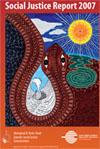 Aboriginal and Torres Strait Islander Social Justice Commissioner
Aboriginal and Torres Strait Islander Social Justice Commissioner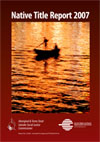 Produce two annual reports: the Social Justice Report and the Native Title Report that explore the extent to which Indigenous Australians enjoy their human rights.
Produce two annual reports: the Social Justice Report and the Native Title Report that explore the extent to which Indigenous Australians enjoy their human rights.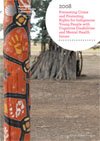 Offender characteristics
Offender characteristics
